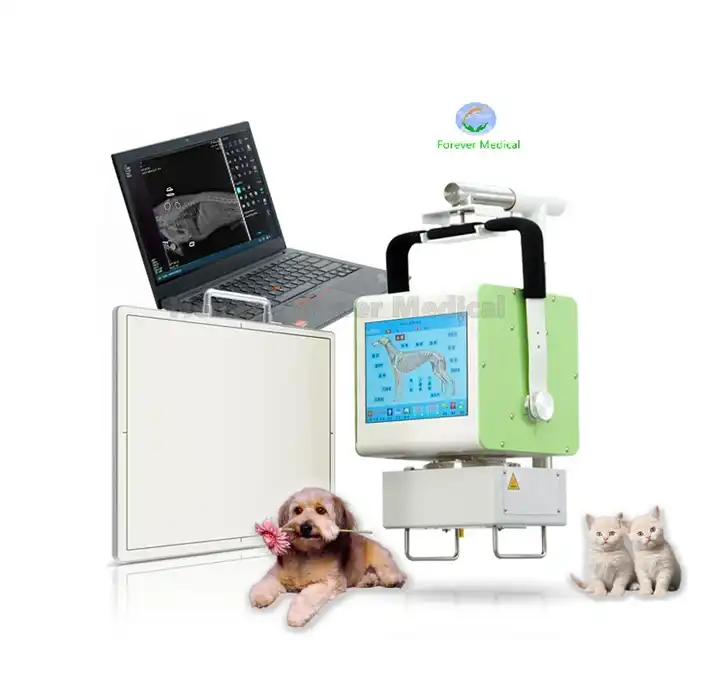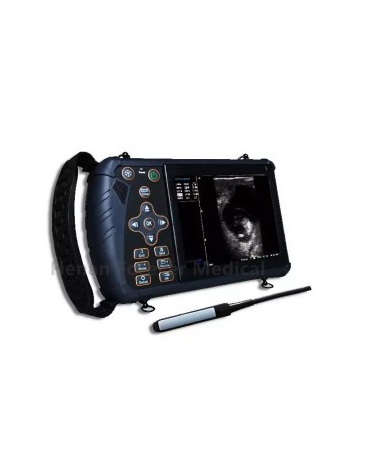-
Portable human X-ray machines are put into use in many clinics
Portable X-ray machines have become increasingly popular in clinics all over the world. These machines are small and lightweight, making them easy to transport and use. Not only are they convenient, but they also emit less radiation than traditional X-ray machines. Many patients have expressed their satisfaction with the use of portable X-ray machines. In the past, patients had to travel to large hospitals or imaging centers to receive X-rays. This not only added to the cost of healthcare, but also made it difficult for patients who had mobility issues. With the availability of portable X-ray machines, patients in remote or rural areas who may not have access to large hospitals can now receive necessary diagnostic testing. One of the main advantages of portable X-ray machines is that they emit less radiation than traditional X-ray machines. This is important because repeated exposure to radiation can be harmful to patients’ health. The use of portable X-ray machines also reduces the need for patients to travel to larger facilities, which can lead to a reduction in unnecessary exposure to radiation. In addition, portable X-ray machines are more cost effective than traditional X-ray machines. They require less maintenance and have lower energy costs....
-

Portable X-ray Machine Loved by Veterinarians in America
The portable vet xray machine manufactured by Henan Forever Medical Co., Ltd. has become a hit among veterinarians in America. The machine is small, light, and easy to use, making it ideal for use in the field. According to Dr. Sarah Johnson, a veterinarian from Arizona, the portable X-ray machine has revolutionized the way she treats animals. “In the past, we had to transport animals to the clinic to get an X-ray, which was both time-consuming and stressful for the animal,” she says. “Now, we can bring the X-ray machine to the animal, which is much less stressful for everyone involved.” One of the key features of the portable vet xray machine machine is its ability to produce high-quality images quickly. This is achieved through the use of advanced digital technology, which allows for faster processing and clearer images. “The images we get from this machine are amazing,” says Dr. Johnson. “They are so clear and detailed that we can see even the smallest fractures and injuries.” Another advantage of the portable X-ray machine is its affordability. Compared to traditional X-ray machines, which can cost tens of thousands of dollars, the portable machine is much more cost-effective. This has made...
-

Cattle use B-ultrasound to check the cause of repeated infertility in dairy cows
Tubal blockage It is usually caused by salpingitis, which may be secondary to metritis or caused by improper uterine flushing, resulting in the inability to combine sperm and eggs. When using B-ultrasound for cows to check the fallopian tubes of dairy cows, if the fallopian tubes are blocked, you can see inflammatory substances in the fallopian tubes on the B-ultrasound images for cattle. Artificial insemination is unhygienic The cow insemination gun was not strictly sterilized or not sterilized, and hygiene was not paid attention to during the operation, which artificially caused metritis to normal estrus cows, resulting in repeated infertility. Therefore, in cows with endometritis seen on B-ultrasound, the follicles are normal, and after insemination, it is difficult to find the gestational sac with B-ultrasound. Such problems are easily overlooked by artificial insemination personnel and cattle farmers. Questions About Nutrition Nutrition It has an impact on the normal development of the fetus and the normal progress of the cow’s pregnancy. For example, nutritional deficiencies or imbalances can cause cow abortion, infertility, childbirth complications, and calf dysplasia and disease. Therefore, nutritional problems have a greater impact. When malnourished, the fetuses of dairy cows will find many deformed fetuses on the B-ultrasound...
-
Contrast-Enhanced Ultrasound Imaging: Enhancing Diagnostic Capabilities
Introduction: Contrast-enhanced ultrasound (CEUS) imaging is a powerful diagnostic tool that utilizes ultrasound waves in combination with contrast agents to enhance the visualization and characterization of various organs and lesions. This article explores the functionalities of contrast-enhanced ultrasound imaging and highlights its significance in clinical practice, offering insights into this advanced imaging technique. Principles of Contrast-Enhanced Ultrasound Imaging: Contrast-enhanced ultrasound imaging involves the injection of microbubble-based contrast agents into the bloodstream. These microbubbles resonate in response to ultrasound waves, producing strong echoes that enhance the imaging signal. By analyzing the behavior of these contrast agents within tissues and blood vessels, CEUS provides valuable information about perfusion, vascularization, and tissue characteristics. Improved Visualization of Vascular Structures: CEUS enables improved visualization of vascular structures, including arteries, veins, and capillaries. By tracking the passage of contrast agents through these vessels in real time, it provides dynamic information about blood flow patterns, highlighting areas of stenosis, thrombosis, or abnormal vessel formations. This helps in the diagnosis and management of conditions such as peripheral arterial disease, liver cirrhosis, and tumors. Characterization of Solid Organ Lesions: CEUS plays a crucial role in the characterization of solid organ lesions, such as liver tumors, renal masses, and pancreatic...
-
Echocardiography: Unveiling the Mysteries of the Heart
Introduction: Echocardiography, also known as cardiac ultrasound, is a crucial imaging technique used to assess the structure and function of the heart. By utilizing ultrasound imaging technology, it provides a non-invasive and real-time method to observe and analyze cardiac motion and blood flow. This article delves into the functionalities of echocardiography and highlights its significance in clinical diagnosis and treatment. Principles and Techniques of Echocardiography: Echocardiography utilizes the echoes of ultrasound waves to create images of the heart. It involves emitting high-frequency sound waves towards the heart and recording the echoes produced as they interact with cardiac tissues, resulting in the formation of images. This technique provides detailed information about the heart, including chamber size, myocardial thickness, valve function, and blood flow patterns. Assessment of Cardiac Structure and Function: Echocardiography allows for a comprehensive evaluation of the heart’s structure and function. It provides detailed measurements of chamber dimensions, enabling the assessment of cardiac size and potential abnormalities. Additionally, it enables the visualization of cardiac walls and the detection of any thickening or thinning, indicating potential cardiac diseases. Echocardiography also plays a vital role in assessing valve function, identifying any regurgitation or stenosis. Furthermore, it allows for the assessment of myocardial...
-
New Policy Initiatives Transforming China’s Healthcare Industry in 2023
The Chinese healthcare industry is undergoing a significant transformation in 2023 with the implementation of groundbreaking policy initiatives aimed at improving accessibility, quality, and efficiency of healthcare services. These new policies, introduced by the Chinese government, are set to revolutionize the healthcare landscape, benefiting both patients and healthcare providers across the nation. Universal Healthcare Coverage Expansion: China’s commitment to achieving universal healthcare coverage takes a giant leap forward in 2023. The government has introduced policies to expand the coverage to include a broader range of medical services, essential medicines, and preventive care. This initiative aims to ensure that every citizen, regardless of their socioeconomic status, has access to affordable and high-quality healthcare services. Digital Health and Telemedicine Advancements: Recognizing the potential of digital health technologies, the Chinese government has implemented policies to promote the adoption of telemedicine and other digital health solutions. These initiatives aim to enhance healthcare accessibility, especially in remote areas, by enabling patients to consult with healthcare professionals remotely. The expansion of telemedicine services will improve efficiency, reduce costs, and alleviate the burden on overcrowded hospitals. Healthcare Infrastructure Development: To meet the growing demand for healthcare services, the Chinese government has invested heavily in infrastructure development. The...
If you have any question, please contact us



